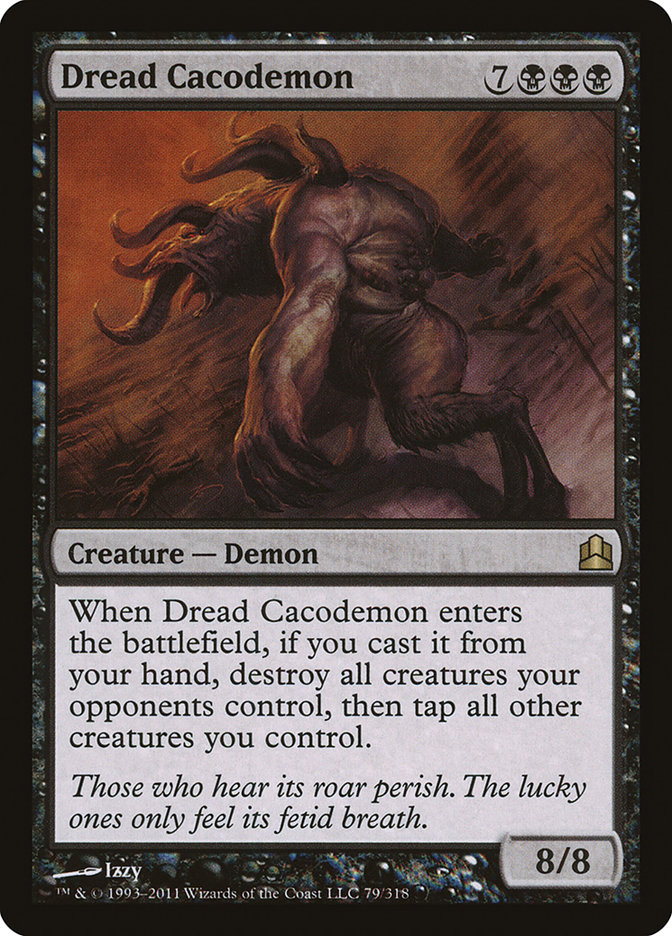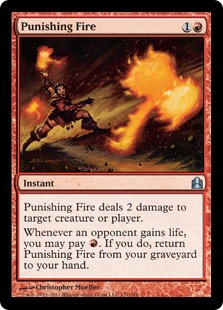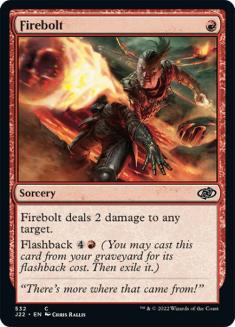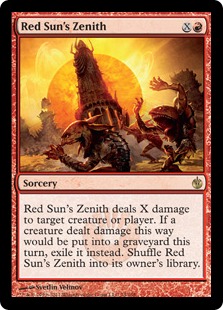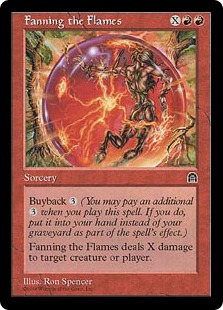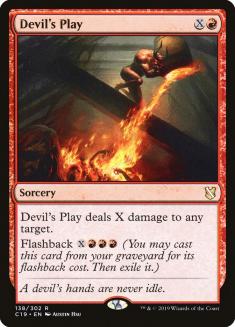Hello folks! I hope you’ve had a blast with the new Fate Reforged stuff, because the set has demonstrated a lot of fun thus far. After cracking some packs,
one of my main interests is in getting the goods for my Commander Cube project. As I consider what changes should be made to improve my Cube, I want to
pause to reflect on my Commander Cube.
I’ve had this Cube for more than a year now, and it’s been one of my babies. I created one Cube prior (a Crap Cube, full of some of the worst cards ever!)
and a fun Pulp Cube later, one that exhibits the flavor of the pulp era. I’m also working on a Mono-Black Cube as well. So I like different, not-as-powered
stuff that pushes the boundaries of the concept of a Cube and what it can represent.
For my Commander Cube, I run a bit over 1000 cards, and of those, I have legendary options embedded in the Cube itself to draft a deck around. Most people
take a good one in the first pick or three and then use those to inspire their deck. We use six packs of fifteen cards each to give you enough cards to
build a synergystic deck around (or just something like control, aggro, or good stuff if that’s your preference).
Ever since it debuted, I have learned so much about how to do a Cube right, and more importantly, what that means in a Commander context. Commander Cubes
aren’t like a normal Cube from a variety of angles.
So, let’s pause all of the crazy Cube gymnastics and instead just take a look back at what I’ve learned from this project.
Let me begin this by telling you the story of Dread Cacodemon. This creature was included in my original Cube because I wanted a creature that would be a
great reward for building your traditional black deck around stuff like Cabal Coffers and Crypt Ghast. And it’s a great reward! It rocks just one more mana
than Plague Wind, and it’s on an 8/8 stick. Now sure, it’ll tap your team for a turn, but that’s worth it to clean up and have your creatures survive. You
can also use it in the same manner with a G/B mana ramping strategy fueled by Cultivate and friends. So it had some value there, right?
But outside of those decks, who wants it? Would a reanimation-oriented deck want it, even if it’s just a vanilla 8/8 in those decks? Would you want to drop
it with Show and Tell, Sneak Attack, or Tooth and Nail if it’s just a vanilla 8/8? No, not really. Most decks that ran black didn’t want the Cacodemon.
Guess what? The decks that wanted him could rely on him being in the pack really late because he’d invariably get passed over and over again for better
things.
The problem is that just one type really wanted him.
I began to learn this lesson with my colors. Due to the quirkiness of color identity as currently envisaged by the format, a card that has colors outside
of your commander anywhere on them simply cannot be run. That changes the Cube. I’ll give you an example:
Suppose you are in a normal Cube draft. In the first pack, I’ve been drafting a fun R/G deck in the first seven picks. Then, in pick eight, I get passed a
Granger Guildmage. It’s a one-drop, so that’s nicely on curve, and I can tap a red mana and lose a life to shoot something for a damage. Seems like a good
deal, right? So I’ll draft it and run it. I don’t even have to be able to pay the white ability at all for it to work. Granger Guildmage is a great
addition.
Well, stuff like that doesn’t work in Commander World. If I add Granger Guildmage to my Commander Cube, the only deck that can run it is a Naya deck or a
five-color deck. That’s it. That means that any card that has three or more colors in its identity, in Commander Cube, can only suit a tiny amount of
archetypes by definition.
Therefore, a while ago, I yanked all of the non-legendary three- and five-color cards I had initially included. You need the legendary creatures to lead
your deck, so they had to remain. Don’t forget that you can always draft one of those legendary folks for your deck anyway. If you are building a Kaalia of
the Vast deck, you can certainly snatch up Oros, the Avenger, right? But by removing the non-legendary three+ color cards, I was able to pull cards that no
one was fighting for.
Take a look at Modern Masters I, a draft format that a lot of folks liked. The goal was to have cards that were valued differently in different archetypes.
Consider Rathi Trapper. Because it’s a black tapper, it has some value in draft as a two-drop that can then tap down an attacker or blocker. It’s a solid,
flexible card for any deck. Now, because the Trooper is a rebel, it’s even better in the B/W rebel deck because you can search it out. That’s great stuff.
Now, take a look at the card again. Notice that rogue creature type?
Take a gander over at Latchkey Faerie. It’s a 3/1 flyer for four mana, which is adequate in a Limited format. But it has the prowl cost of three mana if
you hit someone with a faerie or a…rogue? So you can drop that Trooper on turn 2, attack someone if they are open, then prowl the Latchkey Faerie out, and
draw a card. That’s a powerful adjunct. Now U/B in Modern Masters was faeries, but you can see how this Rathi Trapper has a different value to U/B faeries
than it does for G/B or B/R. For every color combination, the Trooper is a valuable tool. But for rebels, it’s awesome; and for faeries, it has some
additional synergies.
That’s what the cards in my Cube should do. I want every card in my Commander Cube to meet one of three criteria:
1). Awesome cards that are just strong in every deck.
This is where you flip that Consecrated Sphinx, Phyrexian Arena, or Kokusho, the Evening Star. You draft them because they are so good, they upgrade your
deck’s power level.
2). Awesome utility cards.
Everybody wants removal (mass and pinpoint, artifact and creature, etc.). Everyone wants counter magic, land fetching, discarding, and burning. From Acidic
Slime to Vindicate and from Counterspell to Cultivate, people expect a certain level of utility in the Cube to pick up.
3). Support Cards for your Strategy.
This is where you unlock those specific cards for your commander. If you have drafted Xenagos, God of Revels in your first pack and you are building around
him, then there should be some use for him.
This is the most difficult one to flesh out because some people have more needs that others. Sure, Xenagos pretty much just combos with creatures. But if
you draft Zur the Enchanter, you’ll be upset if you never get a chance to pick up a lot of cheap enchantments.
Every support card should either:
A). Support multiple strategies; or
B). Be a utility card that also supports specific commanders and strategies.
Let’s take a look at one recently added example just to illustrate the first of these:
It fits multiple themes in its color. You can add it to Gruul with stuff like Thromak, the Insatiable or to a token theme. You can add it to Jund decks to
give fodder to stuff like Shattergang Brothers or Prossh, Skyraider of Kher and more death triggers with Kresh the Bloodbraided. It works well with Boros’s
aggro strategy and works with Iroas, God of Victory or for getting battalion for Tajic, Blade of the Legion. Now if you don’t have a specific commander
that the good Rider of Beetles supports, you might not be as inclined to draft him. Maybe if he fits a mana curve later on or if you find yourself with a
distinct lack of creatures in your Izzet deck in pack five, but he’s not really pushing his way to the front. That’s okay! Considering all of the different
colors and archetypes that our good Chief suits, he has enough of a value that people want him and will fight for him. That makes the draft more
interesting and more skill intensive.
Now, what about utility cards that support additional strategies?
Consider the burn that your red section uses. You have so many X damage spells over time that you can easily flex them out to support your Cube’s themes,
and the same is true of damage-dealing spells with fixed damage, like Lightning Bolt. My Izzet section has an intentional sorcery/instant-matters theme
built into it. I’ve included triggers like Young Pyromancer and Quiet Contemplation into these colors. What burn do I use to support this theme?
These five burn spells all have Flashback, buyback, or shuffle and re-use built into them. Therefore, they all have a chance to get reused, which increases
the likelihood that they’ll trigger a Young Pyromancer.
Now, if you aren’t running that Izzet theme, you still find value in Firebolt. It’s a great card. And you can enjoy the Flashback fun of Devil’s Play or
the buyback of Fanning the Flames. But if you are drafting that Izzet sub-theme, you have some support spells that rise in value as a result. They are the
Rathi Trapper of my Cube.
And that’s where I want to be. I want all of my support spells to either be a supporting utility card, or supporting multiple archetypes and commanders.
In other words, all cards should be good enough to draft on their own. This strengthens the Cube considerably because people don’t have to ignore some
powerful support card for their strategy like Dread Cacodemon until later in the pack when it wheels and they snag it then.
Finding good cards that fit multiple themes is vital in the success of my Cube. Sometimes, your Rathi Trapper doesn’t have to be that powerful. Take
Sanctum Gargoyle. I run it as a way to help out my Esper and (sometimes) Azorius artifact-based builds. But you know what? It also supports the blink decks
as well, and I’ve seen it run in those decks as a support card. And you can run it in your Boros equipment build too as a way to recur your equipment. So
whether you are running it with Brago, King Eternal, or Stoneforge Mystic, or Godo, Bandit Warlord, or Master of Etherium, you have a lot of ways to use
the Gargoyle as a support card.
My focus has been on unearthing these awesome support cards like the Sanctum Gargoyle and Beetleback Chief that play into multiple archetypes and have them
replace cards like Dread Cacodemon in my Cube.
Sometimes a card seems like it is just a one-theme card, but then as you begin to play with it, you unearth additional value. For example, Imperious
Perfect is clearly an elf enabler. So it works well in tandem with elf cards like Wellwisher, Reclamation Sage, Elvish Visionary, and Llanowar Elves. But
as you play with it, you become more appreciative of the synergies it has with other strategies and commanders. It slides alongside the Selesnya token
sub-theme quite well. Wort, the Raidmother would love to use it and its token to tap and fork a green spell for free. We’ve already discussed the sacrifice
theme that token-making has in Jund that it can play well with. It plays on a lot of levels.
Those are fun cards to have in too, because they play deeper than they may look at first. There’s room for those cards too, cards that play better than
they appear. Other examples include Kaho, Minamo Historian, Rakka Mar, and Krosan Tusker.
With this new eye towards the problems of one-note cards, what are other Dread Cacodemons that I run? Cards like Hibernation’s End, Wellwisher, Valakut,
the Molten Pinnacle, and Flash all have these issues. So does Blazing Archon and Oath of Druids, as well as Isochron Scepter and Elbrus, the Binding Blade.
So it’s probably time I began to systematically remove a lot of these cards from the Cube for cards that meet my three requirements.
Next week I’ll do another injection of cards from Fate Reforged, as well as begin to make some changes based on the lessons that I’ve learned from my
Commander Cube. You can see the first stage in this column then! In the meantime, a few earlier changes have already been made, and you can check it out
over at CubeTutor.com (http://www.cubetutor.com/visualspoiler/14274 – Sometimes you have to cut
and paste the link for it to work.)
What are some lessons you’ve learned from your own Cube projects? How do you handle synergy versus power? Who wins?

